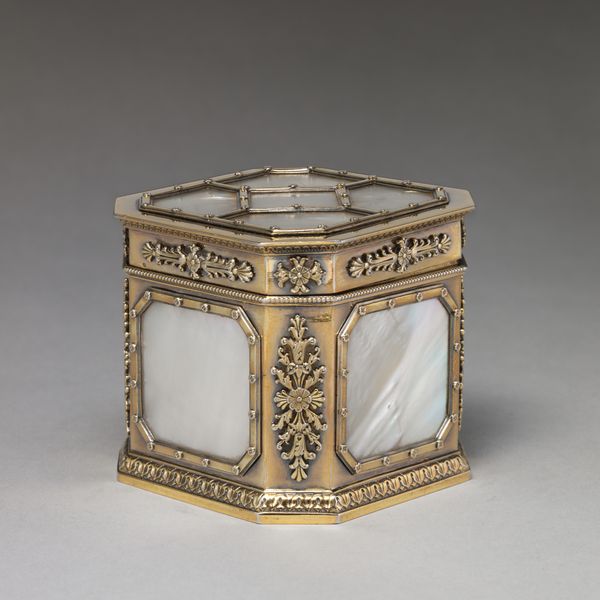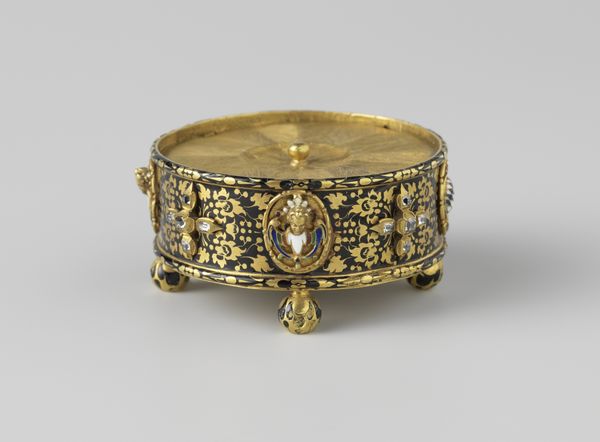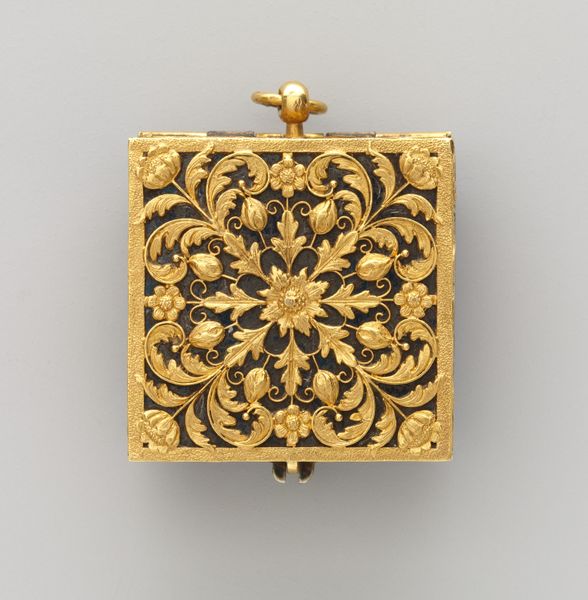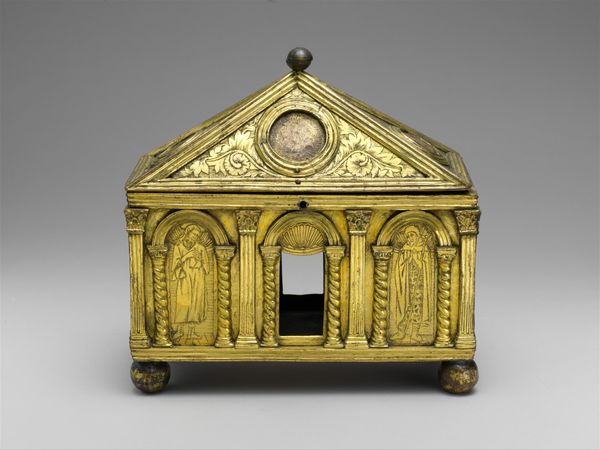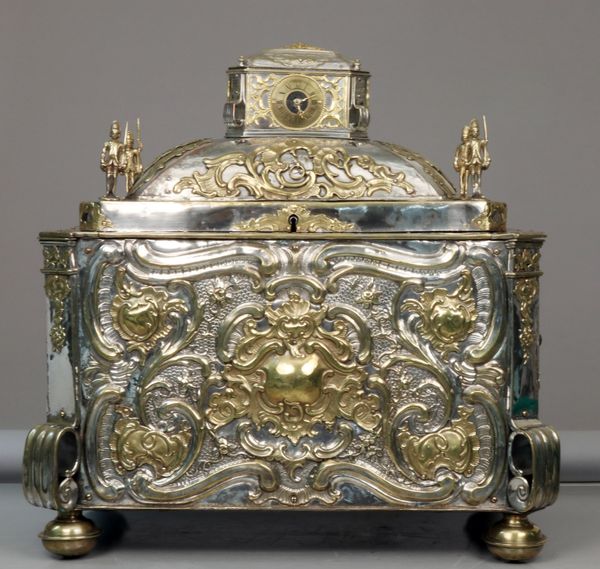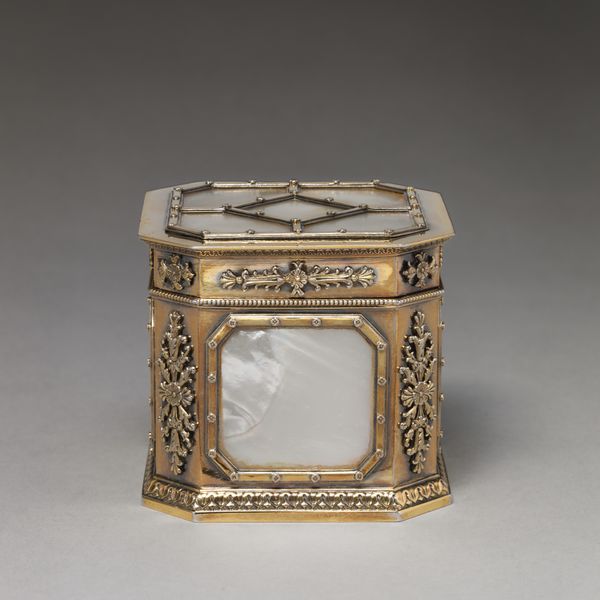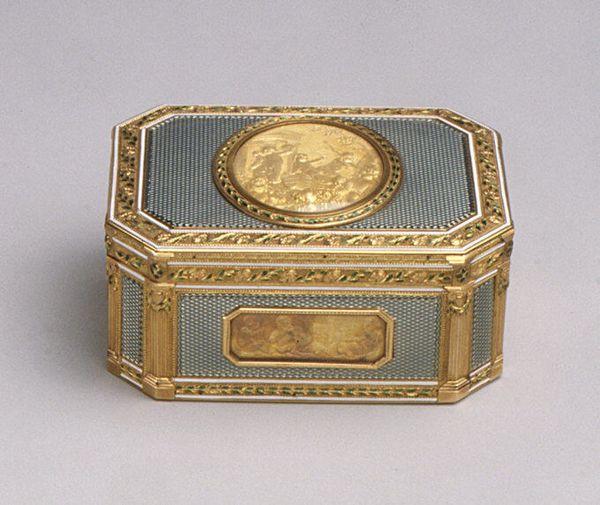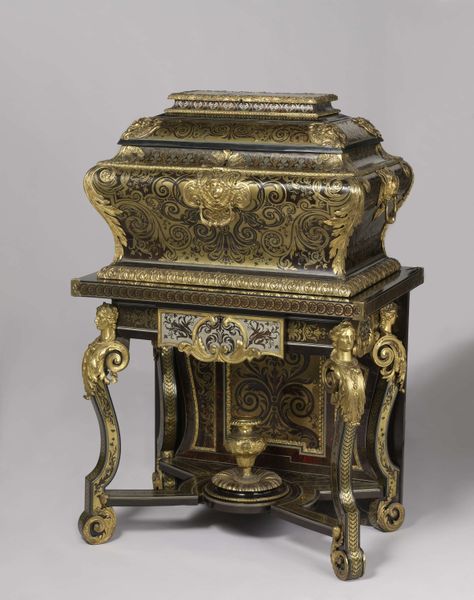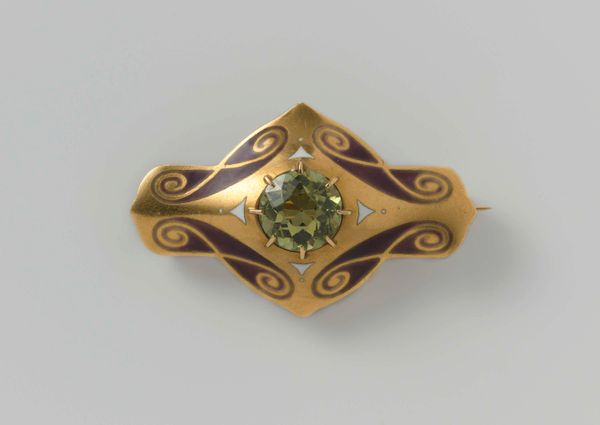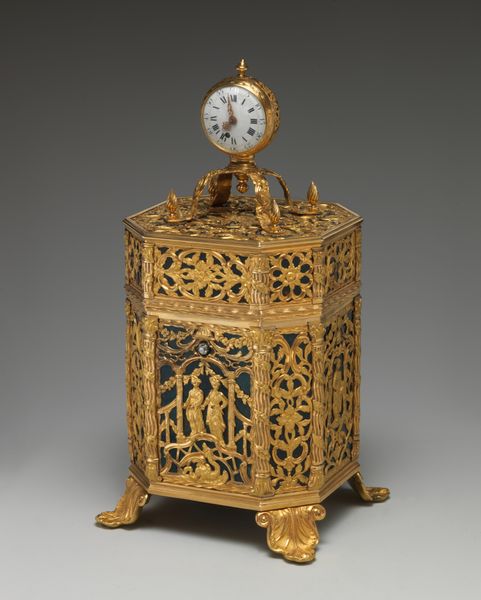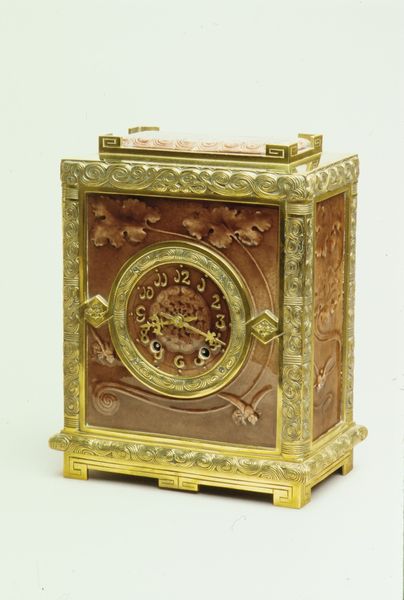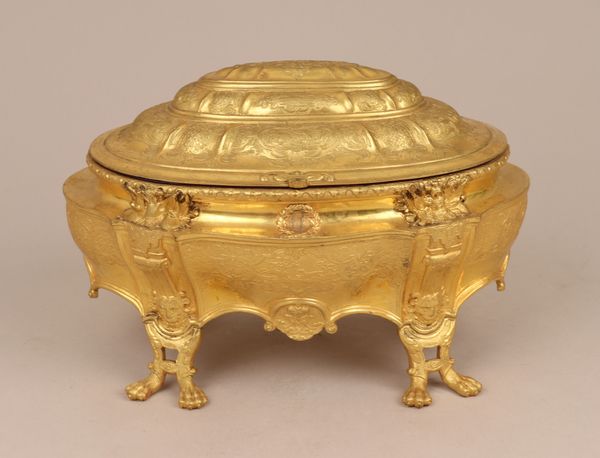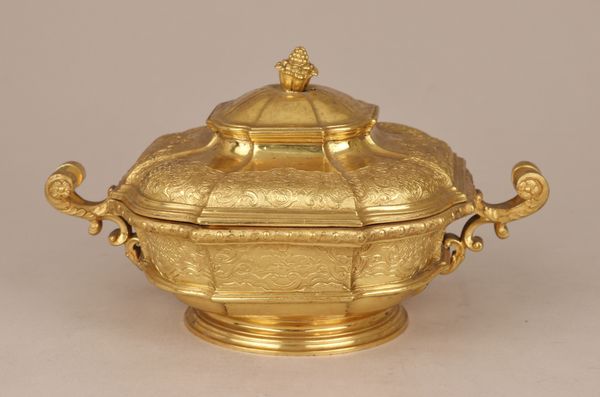
ornament, metal, bronze, sculpture
#
ornament
#
metal
#
bronze
#
sculpture
#
decorative-art
Dimensions: confirrmed: 4 5/8 × 6 1/2 × 5 5/8 in. (11.7 × 16.5 × 14.3 cm)
Copyright: Public Domain
Curator: This gilded bronze inkwell, made around 1851 by Asprey, offers a fascinating glimpse into the ornamental practices of the mid-19th century. What strikes you first about it? Editor: The malachite accents. It feels jewel-like, almost playfully opulent. Imagine dipping your quill into ink from this—it elevates the mundane to the regal. It gives a strange feeling. Like some kind of bizarre alter. Curator: Opulence is indeed a key element here. The bronze casting and intricate chasing demonstrate considerable artisanal skill, and suggest it was likely intended for a wealthy consumer interested in flaunting status through stationery accessories. I believe, this is more than just practical: It's about how industrial manufacturing facilitated ornate objects into domestic settings for people with the means. Editor: Absolutely. There's a dialogue here between industrialization and handcrafted luxury. While bronze allows mass production, those carefully placed malachite cabochons scream hand-selected preciousness, what I'm also trying to grapple with here is this overwhelming tension and strange sense of place in time. It evokes a different type of architecture, interior design, as well as style I feel nostalgic about. Curator: That tension underscores the anxieties of the Victorian period—the collision of tradition and innovation and this drive to bring value through objects during these massive societal shifts, like industrial capitalism for instance. Even the ink itself held increasing importance with burgeoning commerce. The pen, and thus the inkwell, are vital for maintaining accounts, corresponding across expanding businesses, and ultimately helping power an empire through letters and numbers, made physical via the inky quill! Editor: So, beyond status and material, it also mirrors the era's intellectual fervor, doesn’t it? Now, knowing a little of its provenance and social background, I can visualize the user. Curator: Precisely, and appreciating the details allows us insight into those stories—who made this object, for whom, what cultural trends are exemplified. We realize then it's far more than merely ornamental! Editor: True. Seeing it initially I was interested only by aesthetics. Now I appreciate its symbolic function, or purpose during the transition to capitalism. Thanks for walking me through it.
Comments
No comments
Be the first to comment and join the conversation on the ultimate creative platform.
